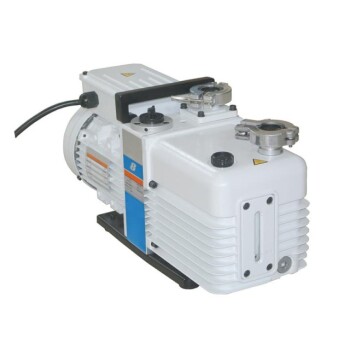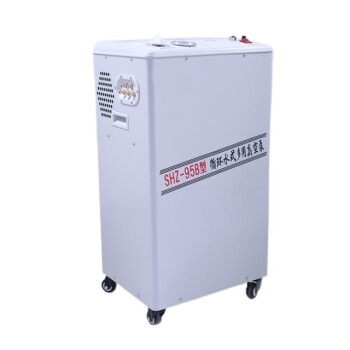The frequency of replacing a vacuum pump depends on its type, usage, and maintenance practices. High-vacuum pumps like turbo pumps and rough vacuum pumps such as oil-sealed vane pumps or dry scroll pumps require regular maintenance to extend their lifespan. Key maintenance tasks include bearing replacement, fluid changes, and seal inspections. Proper maintenance can significantly delay the need for replacement, but if a pump consistently fails to meet performance standards or shows signs of catastrophic failure, replacement becomes necessary. Regular monitoring, adherence to maintenance schedules, and timely servicing are crucial to avoid premature replacement.
Key Points Explained:

-
Types of Vacuum Pumps and Their Lifespan:
- High-Vacuum Pumps (e.g., Turbo Pumps): These pumps require regular servicing, including bearing replacement, to prevent rotor assembly failure. Lifespan can be extended significantly with proper maintenance.
- Rough Vacuum Pumps (e.g., Oil-Sealed Vane Pumps): These need frequent fluid changes, vane replacements, and seal inspections. Contaminants in the fluid can reduce efficiency and lifespan.
- Dry-Roughing Pumps (e.g., Dry Scroll Pumps): These require tip-seal and bearing replacements to prevent major damage. They are generally low-maintenance but still need regular attention.
-
Maintenance Tasks to Extend Lifespan:
- Oil Maintenance: Regularly check oil levels, condition, and type. Change oil when it becomes dark, indicating contamination.
- Seal and Bearing Inspections: Replace seals and bearings as recommended to prevent leaks and ensure airtightness.
- Filter and Hose Checks: Inspect and clean filters, hoses, and gaskets to maintain optimal performance.
- Noise and Vibration Monitoring: Investigate unusual noises or vibrations, as these can indicate internal damage or wear.
-
Performance Monitoring:
- Ultimate Vacuum Check: Use an accurate vacuum gauge monthly to ensure the pump operates within the specified vacuum level. If the reading is more than 15 mbar above the stated level, seek technician assistance.
- Temperature and Fault Alarms: Monitor the pump's temperature and fault alarms to detect early signs of failure.
-
Preventative Measures:
- Gas Ballast Usage: Use the gas ballast when working with condensable vapors to prevent contamination.
- Inline Oil Filters: Consider installing inline oil filters for oil pumps to reduce contamination.
- Discharge Outlet Maintenance: Never block the pump discharge outlet, as back pressure can cause serious internal damage.
-
Signs Indicating Replacement:
- Consistent Performance Drop: If the pump consistently fails to meet performance standards despite maintenance, replacement may be necessary.
- Catastrophic Failure Signs: Unusual noises, excessive vibration, or visible damage are indicators that the pump may need replacement.
- Aging and Wear: Over time, even with maintenance, wear and tear may necessitate replacement.
-
Maintenance Schedule:
- Daily and Weekly Tasks: Regularly check oil levels, inspect for leaks, and monitor noise and vibration.
- Monthly Tasks: Perform ultimate vacuum checks and inspect seals, bearings, and filters.
- Annual Tasks: Conduct a comprehensive inspection, including internal components, and replace parts as needed.
By following a rigorous maintenance schedule and addressing issues promptly, the lifespan of a vacuum pump can be significantly extended, delaying the need for replacement. However, when performance issues persist or catastrophic failure signs appear, replacement becomes the only viable option.
Summary Table:
| Aspect | Details |
|---|---|
| Types of Vacuum Pumps | High-vacuum (e.g., turbo pumps), rough vacuum (e.g., oil-sealed vane pumps), dry-roughing (e.g., dry scroll pumps) |
| Key Maintenance Tasks | Bearing replacement, fluid changes, seal inspections, filter and hose checks |
| Performance Monitoring | Ultimate vacuum checks, temperature and fault alarms, noise and vibration monitoring |
| Preventative Measures | Gas ballast usage, inline oil filters, discharge outlet maintenance |
| Signs of Replacement | Consistent performance drop, catastrophic failure signs, aging and wear |
| Maintenance Schedule | Daily/weekly: oil checks, leak inspections; Monthly: vacuum checks, seal inspections; Annual: comprehensive inspections |
Need help maintaining or replacing your vacuum pump? Contact our experts today for tailored solutions!









